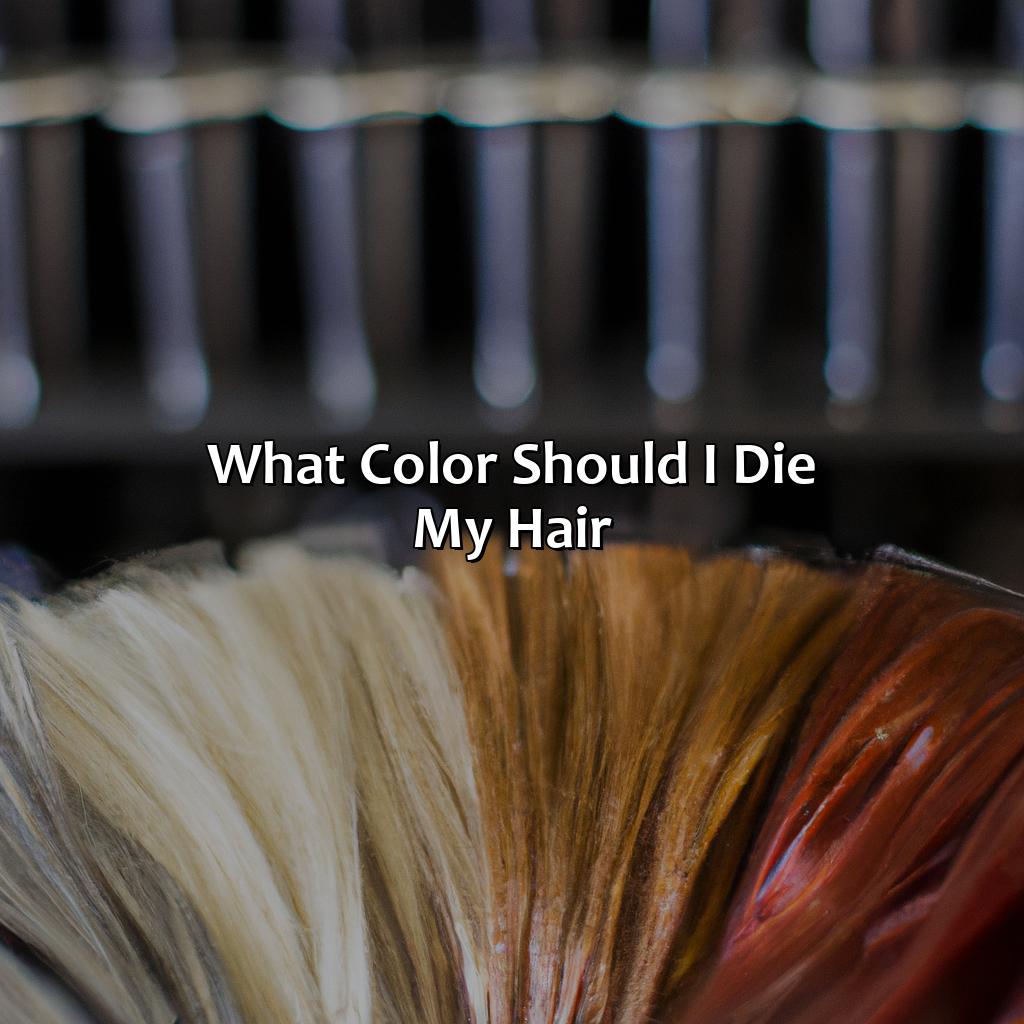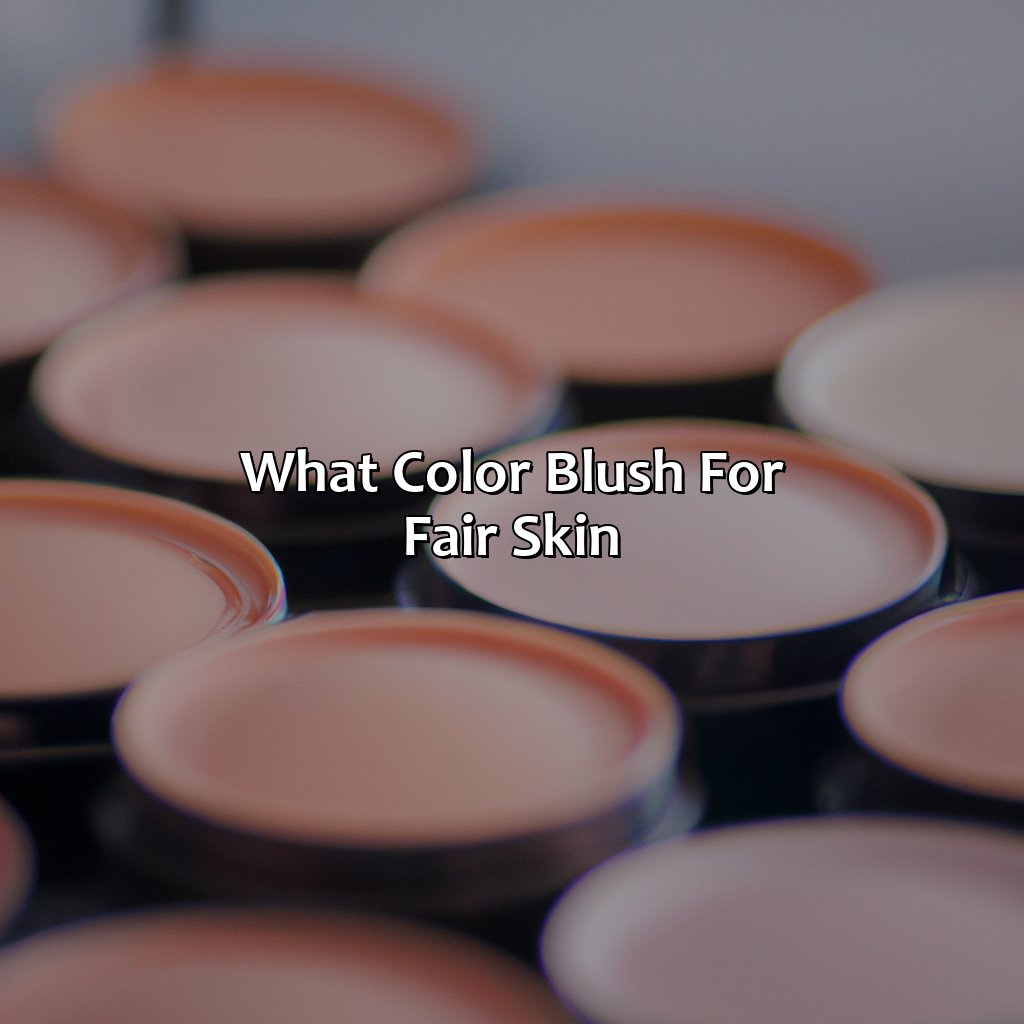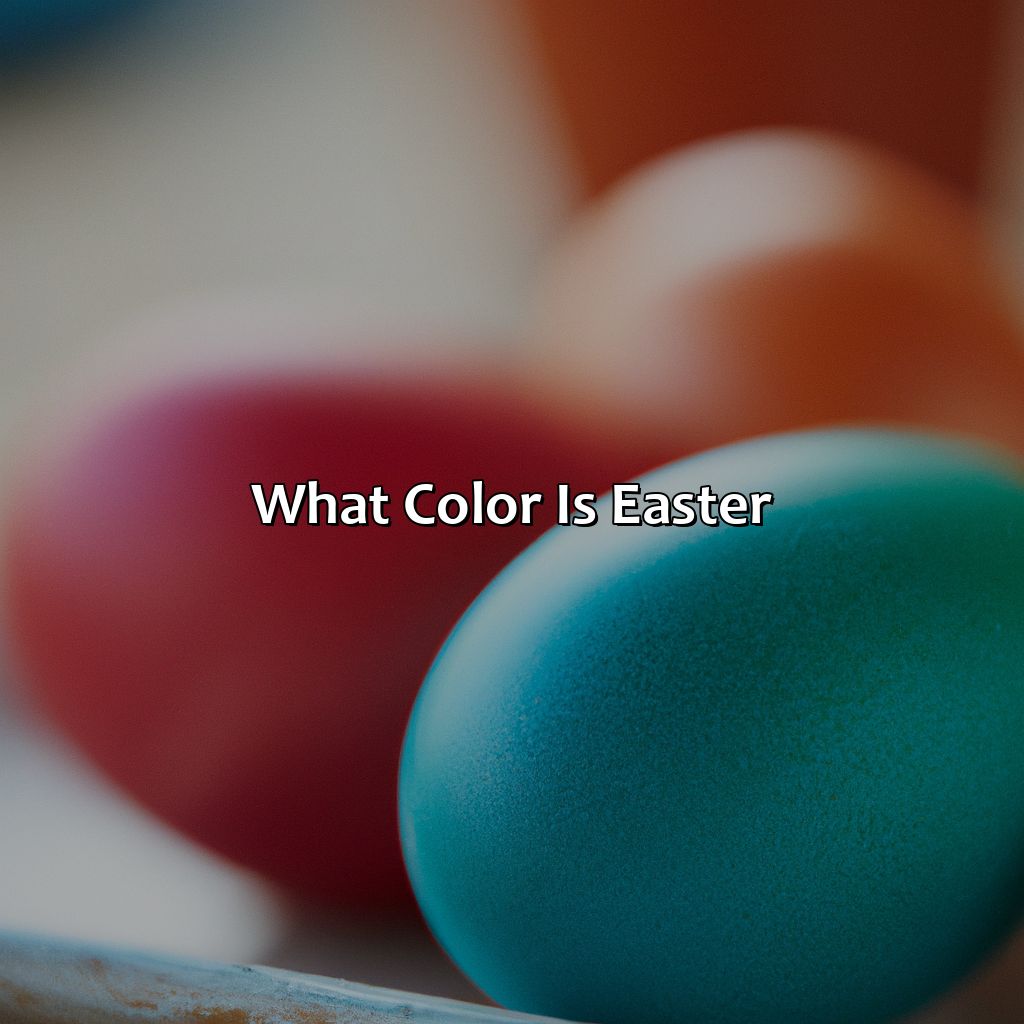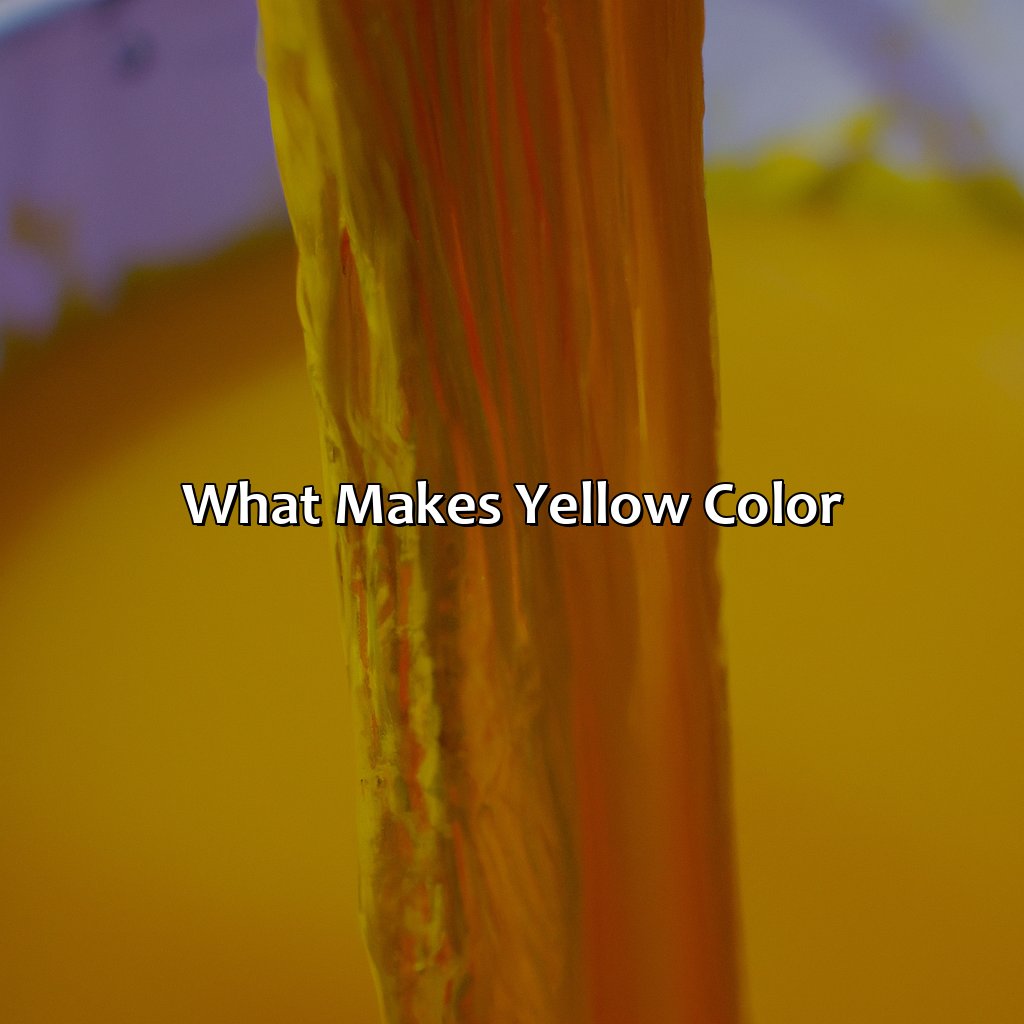Key Takeaway:
- Evaluate hair type and skin tone to ensure the best hair color match: Consider factors like hair type, texture, and skin tone before choosing a hair color.
- Determine the right hair color formula and technique: Decide on permanent, semi-permanent, or temporary colors, and choose between a single process or highlights. Seek advice from a stylist to select the best option.
- Care for colored hair properly: Use color-safe hair products, protect hair from damage, and maintain the color over time by follow a hair care routine.
Evaluating your hair type and skin tone

Photo Credits: colorscombo.com by Brandon Roberts
Evaluating the suitability of hair color depends on hair type and skin tone. Understanding your hair type and skin tone is crucial for selecting the perfect hair color. One should evaluate the thickness, texture, and porosity of hair and identify the undertone and intensity of the skin. By doing so, you can determine the color range that will complement your features. Evaluating your hair type and skin tone can avoid disappointment from selecting the wrong shade.
The evaluation of hair type and skin tone is crucial as it can make a significant impact on the final outcome of the hair color. If you have fine hair, lighter shades would provide more volume and dimension. On the other hand, a darker shade is a better fit for thick hair to provide structure and definition. Your skin undertone and intensity will also influence the shade selection. For instance, people with warm undertones should opt for shades with golden, copper or honey hues. Individuals with cool undertones should opt for shades that have violet or mahogany tones.
Apart from hair type and skin tone, several other factors such as eye color and lifestyle also play a role in the color selection process. One should also consider their maintenance level as color treatments can be high maintenance. It is always recommended to consult a professional stylist who can help you make an informed decision and suggest suitable options for your hair type and skin tone.
Pro Tip: Always perform a patch test before coloring your hair to avoid any allergic reactions.
Choosing the right hair color for your skin tone

Photo Credits: colorscombo.com by Arthur Martin
Match your hair to your skin! First, determine your skin tone. Then, decide if it has warm or cool undertones. Finally, pick a hair color that works for you! Identifying skin tone is the initial step. Determining warm/cool undertones will help you choose wisely. Matching hair colors to your skin tone is the key factor in making the right decision.
Identifying your skin tone
Understanding Your Unique Skin Tone for Flawless Hair Coloring
Identifying your skin tone is crucial in choosing the right hair color to compliment and enhance your natural beauty. It involves determining the undertones of your skin, which can be warm, cool or neutral. Warm tones have yellow or golden hues, while cool tones have pink or blue undertones. Neutral tones have a balance of both.
To identify your skin tone, examine the veins on your wrist. If they appear greenish, you have warm undertones. If they appear bluish or purplish, you have cool undertones. For those with neutral undertones, they may notice a mix of green and blue veins.
It’s important to note that skin tone can change due to factors such as sunlight exposure or aging. Therefore, it’s recommended to test multiple colors on small sections of hair before committing to a full dye job.
To further enhance hair color based on skin tone identification, consider using complimentary shades such as ash blonde or brown for cool-toned skin and warm shades like golden blonde or chestnut brown for warm-toned skin.
Don’t miss out on achieving your perfect hair color by neglecting the importance of identifying your unique skin tone during the decision-making process.
Don’t let warm and cool undertones stress you out, just take a deep breath and let your skin do the talking.
Determining warm/cool undertones
Skin undertones play a crucial role in determining the right hair color. Warm undertones are identified by yellow, peach or golden hues while cool undertones have pink, blue or red hues. Determining your undertone requires analysis of the veins visible on your wrist, characteristics of your eyes, and natural flushing of your skin to identify its primary hue.
The right hair color should complement and enhance natural features while minimizing any imperfections. Combining cool with cool or warm with warm provides a balanced look, whereas pairing warm and cool may result in an unflattering appearance. To determine whether to opt for a warm or cool hair color, you might need to consider seasonal changes and lighting conditions around you. Although most people have a dominant skin tone that either exhibits coolness or warmth, some may have more yellow or red under their skin’s surface than others, blurring the line between warm or cold tones.
Additionally, natural hair color comes into account when deciding on the most suitable hue that maximizes one’s features. Matching undertoned hair color may require advice from professional stylists who recommend correct highlights and lowlights appropriately.
Lastly, it is imperative to invest in routine maintenance of colored hair to keep it looking vibrant and healthy over time as using harsh chemicals can cause damage and harm to both the scalp and follicles. Adopting corrective moisturizing routines like oil treatments ensure hair attracts useful nutrients, stays shiny and softens tangles making combing easier.
Don’t risk ending up with unflattering colors; get professional help matching your skin tone to your perfect hair color expectations! Matching your hair color to your skin tone is like finding the perfect partner – it takes time, effort, and a willingness to embrace your flaws.
Matching hair colors to skin tones
To find the perfect hair color, it is essential to consider hair color matching to skin tone. The right hair color can enhance your natural complexion and features while also covering up any imperfections.
- Identify your skin tone by examining your veins, eye color or jewelry preference
- Determine whether you have warm, cool or neutral undertones
- Match warm skin tones with shades such as golden blondes, copper reds and caramel browns
- Match cool skin tones with hues such as platinum blondes, ash browns and auburn reds.
It’s crucial to get this right to avoid looking unnatural or washed out. However, don’t let these rules constrain you – trust your instincts if you feel good about something!
When considering hair color matching to skin tone, other factors come into play. You should consider the undertones in your clothes and makeup, as well as how light or dark you want to go for optimum hair color matching.
If you want help in picking the perfect shade, consider consulting a professional stylist who will take all of these factors into account when recommending the best possible match.
Your hair color decision should reflect not just your skin tone, but also your personality and lifestyle choices.
Deciding on a hair color based on your personality and lifestyle
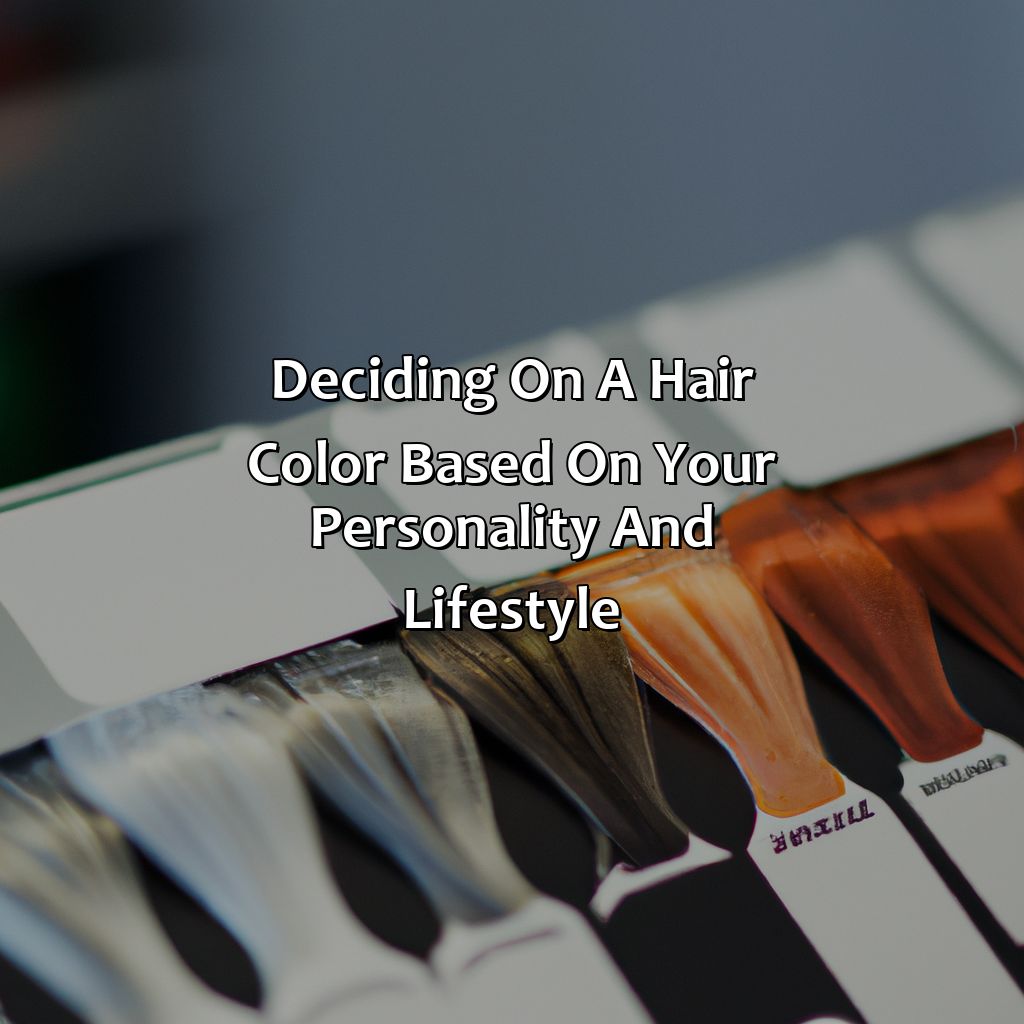
Photo Credits: colorscombo.com by Daniel Williams
Picking the right hair color for you? Consider your personal style, career, and hairstyle.
Maintenance is important too! Break it down into sections. That way, you can get the perfect fit for your lifestyle and personality.
Determining your personal style
One’s personal style plays a crucial role in determining what hair color suits them best. The way you dress, present yourself, and your overall vibe speaks volumes about your personality. Therefore, it is essential to determine your personal style before selecting a hair color. Your personal style can range from classic, edgy, bohemian, or minimalistic. People who lean towards classic styles could opt for timeless hair colors like black or brunettes. Those with edgier tastes could go for bold hues such as pink, purple or blue that make a statement.
Your determination to experiment with styling can help you gauge the type of color suited to your lifestyle. Individuals who lead busy lives may prefer low maintenance hair colors like natural ombre highlights that require less touch-up time in between salon appointments.
Furthermore, determining your personal style can help provide ideas on how to achieve the desired hair color without compromising work ethics. For instance, if you are employed in corporate America or any other professional setting, it’s wise to select neutral or warm tones like chestnut brown or caramel and avoid rainbow-colored shades. Ultimately regardless of the setting one works in; they must feel comfortable and confident rocking their newly colored hair.
Choosing a hair color that matches your career takes a certain level of professionalism, but hey, who said you can’t have fun at the office?
Considering your career
When choosing a new hair color, it’s important to consider your career and how your hair may affect your professional image. The style and color of your hair can impact how you’re perceived in the workplace, so it’s essential to choose a color that reflects both your personality and career goals.
Take into consideration the nature of your work environment, dress code, company culture, and industry standards when selecting a hair color. For example, if you work in a conservative industry such as banking or law, it may be best to opt for more natural tones that complement your skin tone.
Additionally, certain professions may require more upkeep with regards to hair maintenance and grooming. For instance, if you’re an actor or model, you may need to be more experimental with your hair color. Conversely, individuals working in healthcare or education settings may need to stick with more traditional colors that are easy to maintain and won’t be distracting for patients/clients/students.
It’s crucial to strike the right balance between personal expression and professionalism when considering different hues for your hair. In short, go bold with non-traditional colors only if it aligns with the brand image of your employer or profession.
Choosing a high maintenance hairstyle is like willingly signing up for a second job, but with more bad hair days.
Your hairstyle and maintenance requirements
Maintaining a particular hairstyle requires effort and time. The maintenance of hair after coloring is equally crucial as it helps to keep the color fresh and vibrant. Keeping your hair healthy is paramount to maintaining your hairstyle. Choosing the right products for maintenance is essential for ensuring that your hairstyle looks great for longer periods.
A good haircut can help reduce the maintenance required in styling your hair every day. Regular haircuts will also ensure that split ends are prevented, keeping the hair looking healthy. Proper conditioning treatments will help prevent dryness and damage caused by use of heat-styling tools. It is essential to note that different hairstyling techniques require different products and methods of care.
Proper blow-drying, straightening, or curling technique can make a significant difference in how long a style lasts. Styles that require less work or limited heat exposure may last longer than more elaborate styles requiring more work during upkeep.
When choosing a new hairstyle, one should consider various factors such as career requirements, time available for maintenance, face shape, and personality among others. Hairstyles that suit one’s personality enhance self-confidence while expressing one’s individuality.
To maintain a particular style, you must understand what tools you need and how to use them. Cooling tools such as cold rollers or air drying are gentle on hair compared to heat-styling methods such as flat irons or hot rollers which should be used sparingly with added product protection.
By following these guidelines, one can achieve their desired hairstyle while keeping their hair healthy-looking at all times! You may as well get a trim while preparing for hair coloring – killing two birds with one hair appointment.
Preparing your hair for coloring
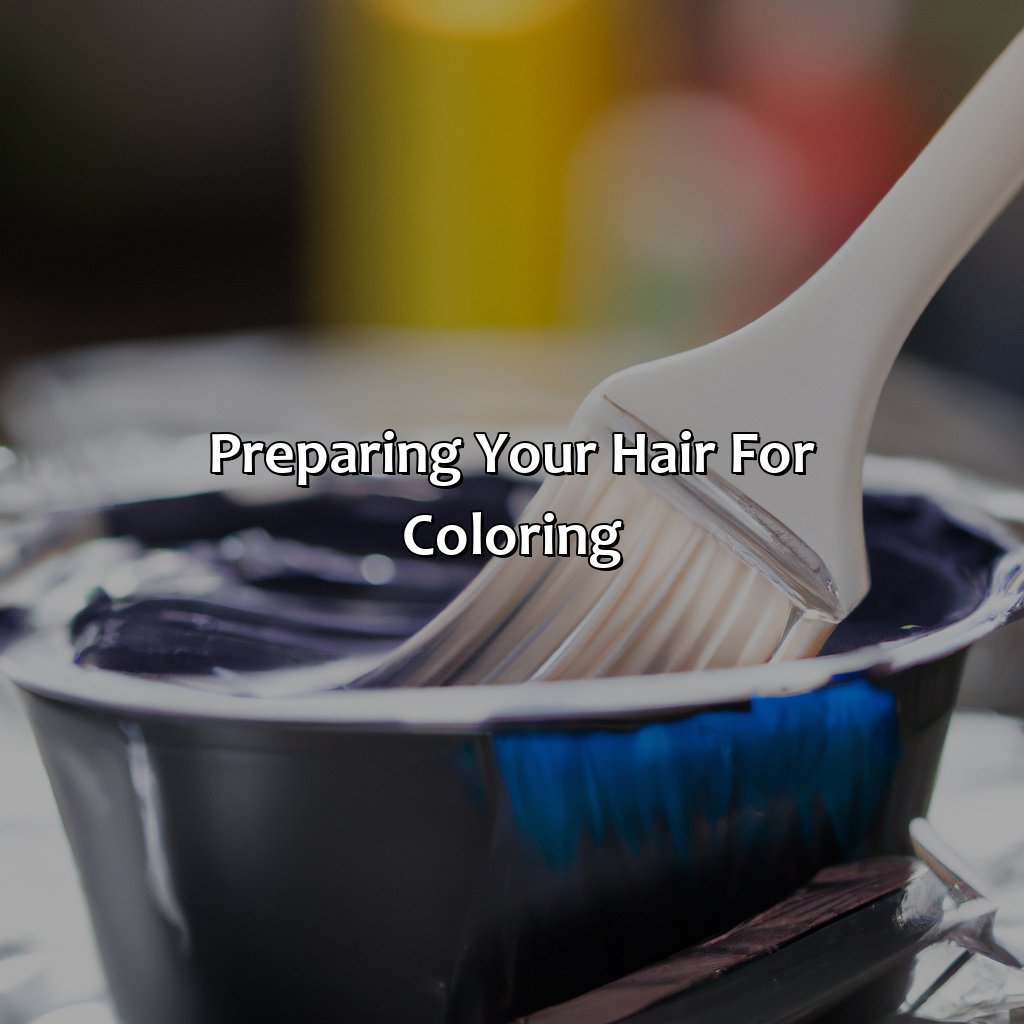
Photo Credits: colorscombo.com by Richard Thomas
What color should I dye my hair? Before you color, get a hair cut or trim to rid of split ends or damage. To prep the hair for coloring, clean and condition it. Dyeing techniques can increase color vibrancy. To avoid hair damage, deep conditioning treatments are key for healthy hair maintenance.
Getting a hair cut or trim
Cutting or trimming your hair is an essential part of preparing for a color change. It helps remove any damage and split ends, creating a healthy base to work with for the coloring process. With the right cut or trim, your new hair color will look better and last longer.
Before visiting a stylist for a haircut or trim, consider your goals and preferences. Do you want to keep your hair length, or are you open to trying something new? Communicate these wishes with your stylist during the consultation. They can advise on what cut would suit you best based on your face shape, hair texture, and personal style.
In addition to discussing style, talk to your stylist about how much hair needs trimming off before coloring it. Trimming off more than an inch of hair could be necessary in situations where there is severe split ends or damage. Be open to their advice on this matter – it may help maintain healthy strands in the long run.
Now that you’re aware of cutting-edge hairstyles and cuts for different skin tones and lifestyle preferences mentioned above, don’t miss out on them before trying out a new look! Get expert advice from professional hairstylists who specialize in trendy hairstyles that amplify facial features and match personality traits such as boldness, confidence, etc. Make an appointment now!
Get your hair in prime condition with these prep tips before you jump head-first into the world of hair coloring.
Prepping your hair for coloring
Proper hair preparation is crucial before coloring to ensure a smooth and even application. Different factors can affect how well your hair accepts the color, so it’s essential to prepare it correctly beforehand.
Prepping your hair for coloring involves four steps:
- Consider washing your hair before coloring to remove any buildup or oil that may interfere with the dye’s effectiveness.
- Avoid using conditioner on the day of coloring as it can act as a barrier preventing the dye from penetrating the strands.
- To achieve even coverage, comb through your hair to detangle any knots or tangles. Ensure you have all the necessary tools and materials ready within easy reach.
- Most importantly, perform a strand test first to check for allergic reactions, compatibility, or unintended results from the dye. This will save you time and money in case any issues arise.
Additionally, it’s best not to color over previously-treated hair or use hot styling tools right before coloring. Doing so can cause damage, dryness, and breakage, making it challenging to achieve desired results.
To avoid disappointment with the outcome of your new hair color after spending time and money on preparation efforts; seek professional advice from an experienced stylist beforehand. With their knowledge and expertise on all things related to hair coloring; they can help identify potential issues that may come up and provide solutions.
Don’t risk damaging your beloved locks by skipping proper hair preparation before taking on a DIY approach. Trusting experts’ guidance alongside following steps mentioned above produces great results while ensuring healthy-looking beautiful hair long after initial treatment appointment.
You don’t want your hair to end up looking like a tumbleweed in the desert – take note of these tips to avoid potential hair damage.
Addressing potential hair damage
Hair damage prevention is crucial when coloring your hair. To avoid harmful damages, start by preparing and conditioning your hair in advance. Protect and moisturize your locks before, during, and after the coloring process with recommended products. Using heat styling tools like straighteners and curling irons can cause additional harm to colored tresses, so use them sparingly. Immediately rinse out any residual chemicals from your hair to prevent extreme damage. Seek professional assistance if you are unsure about the correct approach to color treatment procedures. It is possible to achieve a new look without damaging your hair with proper care.
Lastly, always keep in mind that maintenance routine for colored hair should be different than what it used to be before getting colored hair.
A friend of mine had damaged her hair on two occasions due to bad color transition and inappropriate care of her tresses post-coloring process. She then turned towards salon professionals for advice who instructed her precisely about how she could prevent further damages while coloring her hair again in the future by being careful while picking a brand for coloring formula along with avoiding frequent washes or reducing hot water usage while washing her head as well.
Avoid a hair color disaster by choosing the right formula and technique for your unique tresses.
Choosing the right hair color formula and technique

Photo Credits: colorscombo.com by Jordan Lewis
What hair color should you choose? Temporary? Semi-permanent? Permanent? Single process or highlights? For the perfect color, decide first. Then, get professional advice from a stylist. It’ll be helpful in making the right decision.
Temporary, semi-permanent, or permanent color?
Hair color type determination can be a challenging task for many individuals, and choosing the right color type depends on various factors. The following information will guide you through temporary, semi-permanent, or permanent color options.
The table below outlines the differences between temporary, semi-permanent, and permanent hair color types.
| Hair Color Type | Duration | Coverage |
|---|---|---|
| Temporary | 1-2 days | Minimal |
| Semi-permanent | 6-8 weeks | Medium |
| Permanent | Until cut out or grows back out | Full |
In addition to these types of hair colors, there are also non-ammonia-based hair colors and ammonia-based hair colors. The use of ammonia provides longer-lasting results but can have harsher effects on your hair strands.
When selecting a coloring type, it’s vital to consider your unique lifestyle needs. For example, if you need more flexibility to change up your hair often with less damage to your strands. Temporary colors offer this benefit while allowing individuals to experiment with different hues without a long-term commitment.
For those seeking a more low maintenance option that still provides vibrant color and coverage, semi-permanent hair colors may be ideal. These provide long-lasting results lasting up to eight weeks without damaging the natural pigment of your tresses.
No matter which option you choose, it’s essential to keep your strands nourished and conditioned with proper hydration post-coloring. Use sulfate-free shampoos and conditioners for optimal results.
Choosing between single process or highlights? Why not go for both and give yourself an extra personality option.
Choosing between a single process or highlights
When it comes to coloring your hair, there are different techniques to choose from. One of the choices you’ll make is whether to opt for a single process or highlights.
- Single process: This involves applying color to your entire head of hair. It’s a good choice if you want a complete hair transformation or if you want to cover gray hairs.
- Highlights: This technique involves dyeing only a portion of your hair strands, typically by using foil. It can be used to add depth, dimension, and texture to your hair.
- Creative combinations: You can also combine the two techniques. For example, use single process for an overall look, then add highlights for layers that pop.
It is important to remember that each technique has its own unique advantages and disadvantages.
In addition to taking into consideration whether you want single process or highlights, it’s important to consider other factors such as your skin tone and personality when deciding on a color for your hair.
When deciding between these techniques:
- Consider the final look you’re aiming for.
- Think about the maintenance level of each option given your lifestyle.
- Don’t forget about how easy each option is on your wallet – highlighting tends to be more expensive than single process coloring.
Before committing to a particular option and technique, it’s always best to speak directly with an experienced stylist who can offer personalized recommendations based on their professional training and experience.
Overall, don’t be afraid of trying out new things – either in terms of technique or color! With proper care and attention after coloring, this could be one of those decisions that helps boost confidence and positively impact self-esteem. Trust your hair to a professional, unless you want to end up with a color that makes you look like a traffic cone.
Getting professional advice from a stylist
Getting expert guidance from a stylist is crucial when choosing the right hair color. Professional advice covers various aspects of hair coloring, including hair type, skin tone, lifestyle, and personality. It can help you understand your options better and avoid any potential mistakes that could damage your hair. A competent hairstylist will assess your hair’s condition and suggest the best color formula, technique, and maintenance routine.
Stylists recommend different approaches based on your specific needs and preferences. They analyze current trends while considering your unique style to ensure that the final result is desirable. Professional advice includes assessing factors like light exposure and how it affects color vibrancy or longevity.
A skilled stylist can educate clients about the products and techniques used to help them maintain their ideal look. This includes recommending specific shampoos, conditioners, and other products designed for colored hair.
Pro Tip: Always trust an experienced professional who regularly attends training courses to stay up-to-date on emerging trends in hairstyles and hair coloring techniques.
Congratulations, your hair is now a masterpiece. Just don’t forget to treat it like one.
Caring for your newly-colored hair

Photo Credits: colorscombo.com by Edward Green
Caring for your freshly-dyed hair? Here’s what you need to do!
Use color-safe products such as shampoos, conditioners and hair masks. Avoid harsh chemicals and heat styling tools. For long-term hair maintenance, there are tricks and tips you can use. Keep your color vibrant for longer!
Using color-safe hair products
Color-safe hair products are essential for maintaining the vibrancy and health of dyed hair. These products contain ingredients that are gentle and moisturizing, helping to prevent color fading and damage from everyday hair care.
- Choose sulfate-free shampoos and conditioners to avoid stripping the hair of its natural oils.
- Avoid using hot tools too frequently, as high heat can cause color to fade faster.
- Use leave-in treatments or hair masks to hydrate and nourish colored hair.
- Select products specifically designed for your hair color, such as a purple shampoo to enhance blonde tones.
- Avoid harsh chemicals like chlorine and saltwater, which can lead to significant color fading and damage over time.
- Consider investing in a UV protecting spray or serum for extra defense against environmental factors that may affect your color-treated hair.
Using color-safe products also extends the life of your hair dye while reducing the cost of frequent touch-ups caused by lightened colors.
To ensure healthy-looking dyed locks, avoiding harmful ingredients such as sulfates is important. For color-treated hair, one should change their washing routine by adopting new formulas customized for both beauty routines such as deep conditioning at least once or twice weekly.
Don’t risk losing the brilliant results from vibrant colored-hair with sulfate-filled shampoos. Incorporate quality protective products into one’s daily care routine now!
Protect your hair like your life depends on it- because let’s be real, it kinda does.
Protecting your hair from damage
To safeguard your hair from damage while coloring, it is essential to take specific measures. This not only helps the hair color last longer but also maintains the health and luster of the hair.
Using products that are specifically created for hair protection can significantly contribute towards damage prevention. It is important to keep in mind that strong chemicals used in permanent dyes can cause dryness and breakage, especially if overused. Over-washing your hair can result in fading and loss of color intensity as well.
Using a heat protectant spray before using any styling tools like blow dryers or straighteners can reduce the occurrence of split ends and frizziness. Hair mask applications once a week alongside regular deep conditioning treatments will also help preserve the quality of colored hair.
While coloring your hair, always opt for a reputable brand with less harsh chemicals on their formula list. Read ingredient labels thoroughly before use and seek professional advice in case you have any doubts about potential risks.
True History – There is an ongoing misconception that coloring one’s hair deteriorates its condition irreversibly, causing long-term damage to both scalp and strands. However, with advancements in technology even when trying out new styles or shades, proper care combined with quality coloring techniques have proven far less detrimental than believed earlier.
Maintaining your hair color over time is like a long-term relationship: it requires effort, commitment, and the occasional deep conditioning treatment.
Maintaining your hair color over time
To ensure your hair color lasts as long as possible, proper hair color maintenance and long-term care are essential. This involves:
- using color-safe hair products
- avoiding excessive heat styling
- protecting your hair from the sun’s harmful UV rays
Moreover, maintaining a healthy hair care routine through regular deep conditioning treatments can help prevent color fading and ensure your hair stays nourished and healthy-looking. A consistent touch-up schedule with your stylist can also help maintain the vibrancy of your color over time.
Get ready to spice things up and experiment with different hair colors because variety is the spice of life (and hair)!
Experimenting with different hair colors
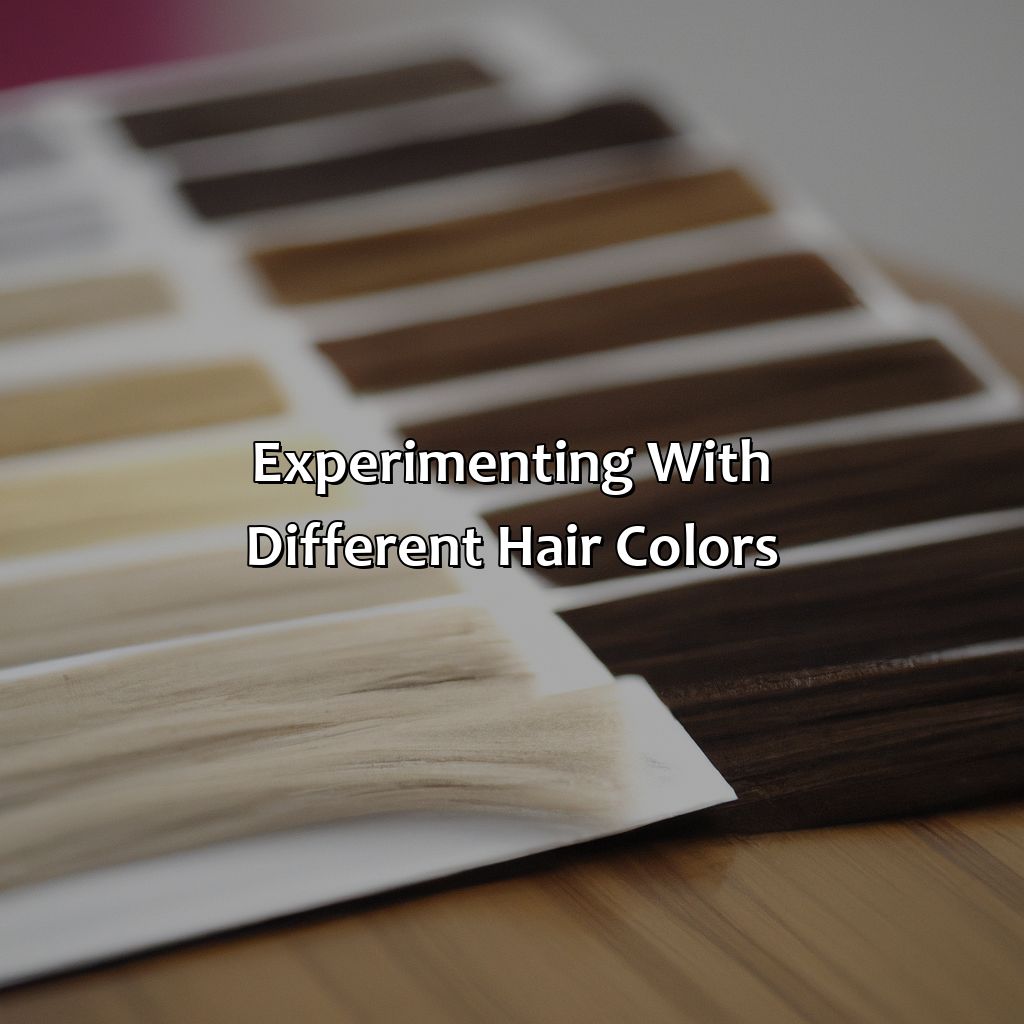
Photo Credits: colorscombo.com by David Torres
Want to try out different hair colors? There are three solutions!
- Go for a low-commitment option and use temporary colors.
- Experiment with hair extensions or wigs to switch up your look.
- Or go bold and make a statement with bright jewel tones or pastels.
Trying out temporary colors
Temporary hair colors are a great way to experiment with different looks without committing long term. Here are some points to consider when trying out these exciting colors:
- Temporary color sprays, chalks or gels can be used on natural or colored hair.
- These are perfect for special occasions like parties, festivals or concerts.
- The color usually fades after one to three washes, depending on the brand and technique used.
- Choose from a range of bright, vivid colors or pastel shades for a subtle look.
- Experiment with ombre or balayage techniques using temporary color products.
When using temporary colors, it is important to note that frequent use of these products can lead to dryness and breakage. Therefore, it is recommended to limit the usage and treat your hair with deep conditioning products.
To make the most of your experimentation phase, don’t shy away from trying different brands and methods of applying temporary color. You can mix and match different colors for unique results. Who needs commitment when you have hair extensions and wigs to switch up your look?
Using hair extensions or wigs
Hair extensions and wigs offer a great way to switch up your hairstyle without committing to a permanent hair color change. They are a popular choice among people who want to experiment with different colors, lengths, and styles without compromising the health of their natural hair.
- Extensions: Hair extensions come in various types, including clip-ins, sew-ins, tape-ins, and fusion. Clip-in extensions are easy to install and remove, but they may not blend well with all hair textures. Sew-in extensions are the most durable, but they require professional installation. Tape-in extensions lay flat against the scalp and work well for finer hair types. Fusion extensions use heat or other adhesives to attach strands of human or synthetic hair to your natural hair.
- Wigs: Wigs can be synthetic or made of natural human hair. They give you endless possibilities in terms of colors and styles. You can opt for full wigs, which cover your entire head or falls; partial wigs also known as half-wigs that only add volume and cover part of your head.
- You can customize both the length and color of your extensions or wigs based on your preferences.
- Wearing high-quality toupees helps prevent damage to one’s natural shafts due to exposure from dye chemicals.
- You must take care of both hair replacement solutions just like you will with normal hair by regularly washing them with appropriate products.
- The cost varies depending on quality level material used being artificial (lower price range), real human hair (from mid-range) up-to luxury versions made entirely out of virgin materials.
An important point to keep in mind is that poorly installed wigs or low-quality extensions can cause damage or even lead to traction alopecia if left unaddressed.
Going bold with non-traditional hair colors .
Exploring Bold Hair Color Options Beyond Traditional Shades
For those looking to make a statement with their hair, bold non-traditional colors have become more popular than ever. From pastel pinks and blues to vibrant purples and greens, there are endless possibilities for those ready to embrace a daring new look.
One benefit of choosing non-traditional colors is the ability to personalize your style. Whether you opt for a bright hue or a subtler shade, these unique colors can help you express your creativity and individuality.
While bold colors may require more upkeep and maintenance than traditional shades, the results can be well worth it. However, it is essential to find an experienced stylist who can recommend the right products and techniques to keep hair healthy while maintaining color vibrancy.
Whether you’re looking for a dramatic change or just want to experiment with something new, there’s no better time to try out bold hair colors than now. Don’t be afraid to step outside of your comfort zone and embrace the beauty of non-traditional options. You might just discover a fierce new look that outshines anything you’ve tried before.
Some Facts About What Color Should I Dye My Hair:
- ✅ Choosing the right hair color can enhance your overall appearance and boost your confidence. (Source: L’Oreal Paris)
- ✅ Skin tone, eye color, and natural hair color are important factors to consider when choosing a hair color. (Source: Good Housekeeping)
- ✅ Different hair colors can convey different meanings, such as red for boldness, blonde for playfulness, and black for mystery. (Source: Byrdie)
- ✅ Professional hair colorists can provide personalized recommendations based on your specific features and preferences. (Source: InStyle)
- ✅ Regular maintenance and proper hair care can help prolong the lifespan of your chosen hair color. (Source: Marie Claire)
FAQs about What Color Should I Die My Hair
What color should I dye my hair?
Choosing a new hair color can be a fun and exciting way to switch up your look. Ultimately, the color you choose should depend on your personal preferences, skin tone, and lifestyle. Some popular hair colors include blonde, brunette, redhead, and trendy colors like purple, pink, and blue. Consulting with a professional stylist can also help you decide which color will suit you best.
Can I dye my hair a drastically different color?
If you’re thinking about changing your hair color from one extreme to another, it’s important to consider the health of your hair and consult with a professional. Dying your hair from dark to light or light to dark can be a lengthy and damaging process. However, with proper preparation and care, it’s possible to achieve your desired look with minimal damage to your hair.
Will a certain hair color suit my skin tone?
The best hair color for you will depend on your skin tone. Cooler skin tones tend to look better with cool tones like platinum blonde, ash brown, and cool reds, while warmer skin tones tend to look better with warmer shades like golden blonde, caramel brown, and coppery reds. If you’re unsure which category your skin tone falls into, consult with a stylist for their expert opinion.
How often will I need to touch up my roots?
The frequency at which you’ll need to touch up your roots will depend on how drastic the change in color is from your natural hair color. If you’re only tinting your hair slightly lighter or darker, you may be able to wait 6-8 weeks before touching up. However, if you’re going for a drastic change, like blonde to black or vice versa, you may need to touch up your roots every 2-4 weeks.
How should I prepare my hair before dying it?
Before dying your hair, it’s important to ensure your hair is clean and healthy. Shampoo and condition your hair a day or two before coloring to allow your hair’s natural oils to build up and protect your scalp during the coloring process. Avoid styling your hair with products that can leave residue, and don’t wash your hair the day of the coloring appointment. If you have any damage or split ends, it’s best to trim them before coloring to ensure an even look.
How can I maintain my new hair color?
Maintaining your new hair color depends on the specific shade and your hair’s natural texture. Generally, it’s best to use products formulated for colored hair and avoid exposing your hair to too much heat. Washing your hair less frequently and using a dry shampoo in between washes can also help extend the life of your color. Consulting with your stylist for specific product recommendations can help you maintain your new hair color and keep it looking fresh.
